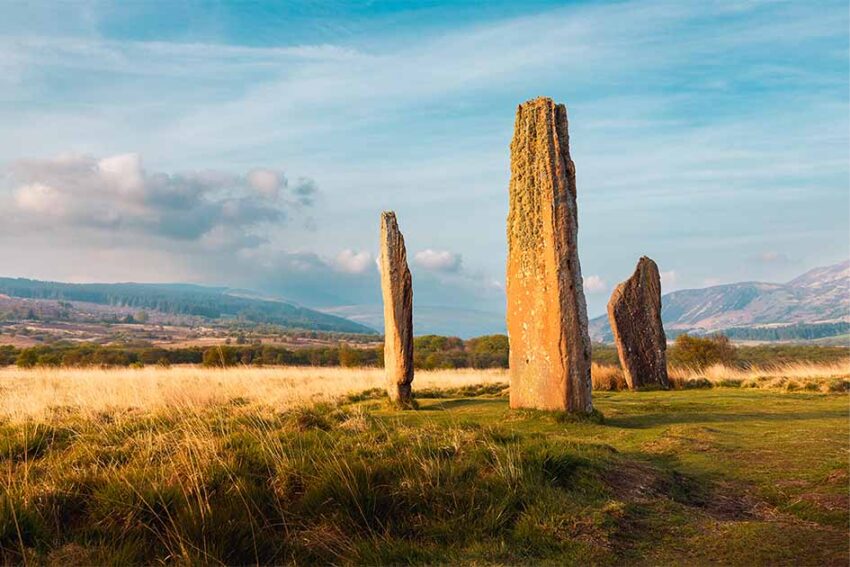A group of researchers have discovered what is believed to be a Neolithic monument in a rich prehistoric landscape on the Isle of Arran in Scotland.
This enormous monument, which is 1.1 km long and 50 meters wide, is one of the earliest of its kind to be constructed by farmers in Neolithic Britain.
A cursus is a massive Neolithic structure made up of a single or more rectangular enclosures. A sizable bank made of stone, soil, and turf surrounds the entire enclosure to denote the cursus on Arran. The amount of labor required to build this monument would have changed the local environment completely.
According to scholars, this monument type could date to perhaps as early as 3500 BC. The chance to explore a cursus is extremely uncommon and incredibly intriguing. It is the most complete example of this site type that can be found in Britain.
In the same region, prehistoric field boundaries, clearing cairns, and round huts have also been discovered. All of these are preserved within bogs, sealing the archaeological strata, and at least some of them may be contemporaneous with the monument. A unique opportunity to comprehend how modern farming practice and settlement interacted with the Neolithic monument and how early farmers changed this place is provided by ancient soils that represent the original Neolithic land surface in addition to cultivated soils from the Bronze Age.
The site’s landscape geoarchaeology and environmental science study was co-led by Dr. Emma Jenkins, an associate professor of archaeology at Bournemouth University. In order to collect samples for dating and other environmental evidence, it was necessary to excavate regions close to the cursus into Neolithic and Bronze Age field systems. This will aid the crew in comprehending how people have utilized and managed this significant terrain.
Dr Jenkins said, “The Isle of Arran is well known for Machrie Moor with its Prehistoric stone and timber circles; standing stones and burial cairns but the discovery that these may be part of a much larger complex which included this enormous cursus elevates this into a region of global significance on a par with other ceremonial landscapes like Stonehenge. As an environmental archaeologist I am particularly excited by the discovery of well-preserved soils, contemporary with the creation of the cursus which means we can investigate how people used and modified this landscape from the time of the first farming communities in Britain.”
This research will contribute essential knowledge about the history of the environment and previous ecosystems to their work. The team also supported the involvement of local community members in the research process. Regional artists were supported by North Ayrshire Council and Arran Theatre and Arts Trust.
Prof. Nicki Whitehouse, Professor of Archaeological Science, University of Glasgow, said: “The initial discoveries reveal a highly unusual combination of a ceremonial monument within a prehistoric farming landscape. It is part of a continuum that likely linked to the ritual site at Machrie Moor, probably forming part of something much more extensive. The science work will allow us to understand about the animals and plants people farmed, how people impacted the landscape and its ecosystems and transformed their soils for cultivation – and what we may learn from this today.”
Bournemouth University
